Parmigianino (1503-1540)
We Perform Parmagianino art authentication. Parmagianino appraisal. Parmagianino certificates of authenticity (COA). Parmagianino analysis, research, scientific tests, full art authentications. We will help you sell your Parmagianino or we will sell it for you.
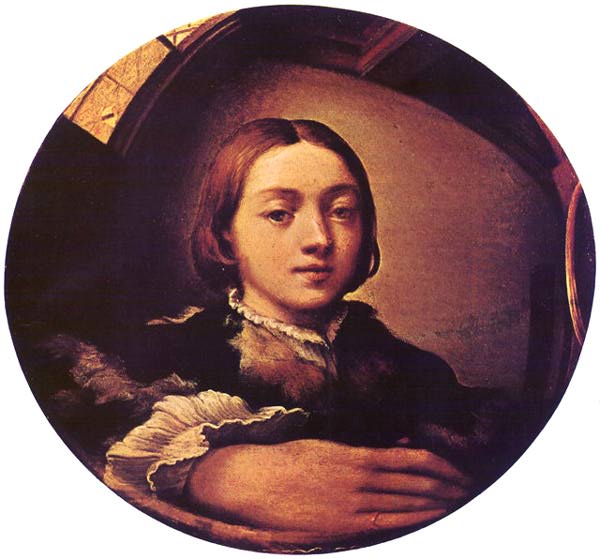
Girolamo Francesco Maria Mazzola, also known as Francesco Mazzola or more commonly as Parmigianino (a nickname meaning ‘the little one from Parma’) or sometimes “Parmigiano”, was a prominent Italian Mannerist painter and printmaker active in Florence, Rome, Bologna, and his native city of Parma.
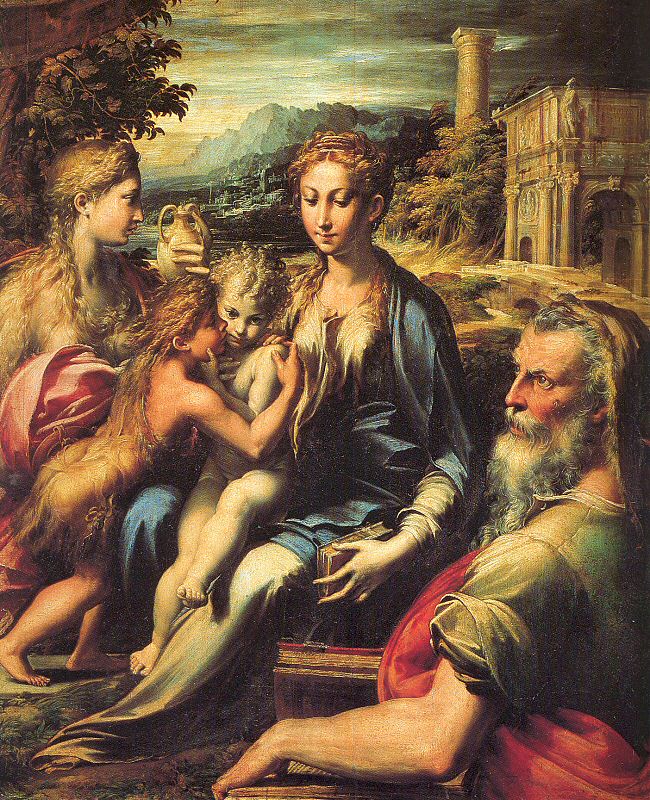
Parmigianino was the eighth child of Filippo Mazzola and Maria di ser Guglielmo. His father died of the plague two years after this son’s birth, and the children were raised by their uncles, Michele and Pier Ilario, who according to Vasari were modestly talented artists. In 1515, his uncle received a commission from Nicolo Zangrandi for the decoration of a chapel in San Giovanni Evangelista; a work later completed by a young Parmigianino. By the age of eighteen, he had already completed the Marriage of Catherine altarpiece for Santa Maria at Bardi. In 1521, Parmigianino was sent to Viadana (along with painter Girolamo Bedoli who was to marry his cousin) to escape the wars between French, Imperial, and papal armies. In Viadana, he painted two panels in tempera, depicting Saint Francis for the church of the Frati de’ Zoccoli, and the Mystical Marriage of Saint Catherine for San Pietro. He also worked in San Giovanni and met Correggio who was at work in the fresco decorations of the cupola.
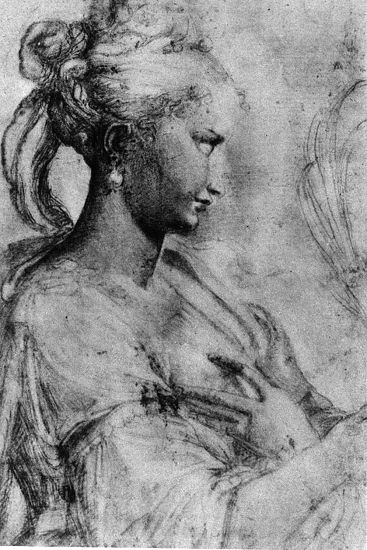
Parmigianino received a major commission in 1522 to decorate the left transept arm of San Giovanni cathedral; however, he never completed the work. In 1523-1524, Parmigianino frescoed 14 lunnettes depicting episodes from Ovid’s Metamorphosis of “Diane and Acteon” for the ceiling of a room in Duke Galeazzo Sanvitale’s Rocca Sanvitale in Fontanellato, some 20 miles from Parma. Also in this period, he met Girolamo Mazzola Bedoli, a fellow apprentice in the shop of Parmigianino’s uncles, and who had married Parmigianino’s cousin.
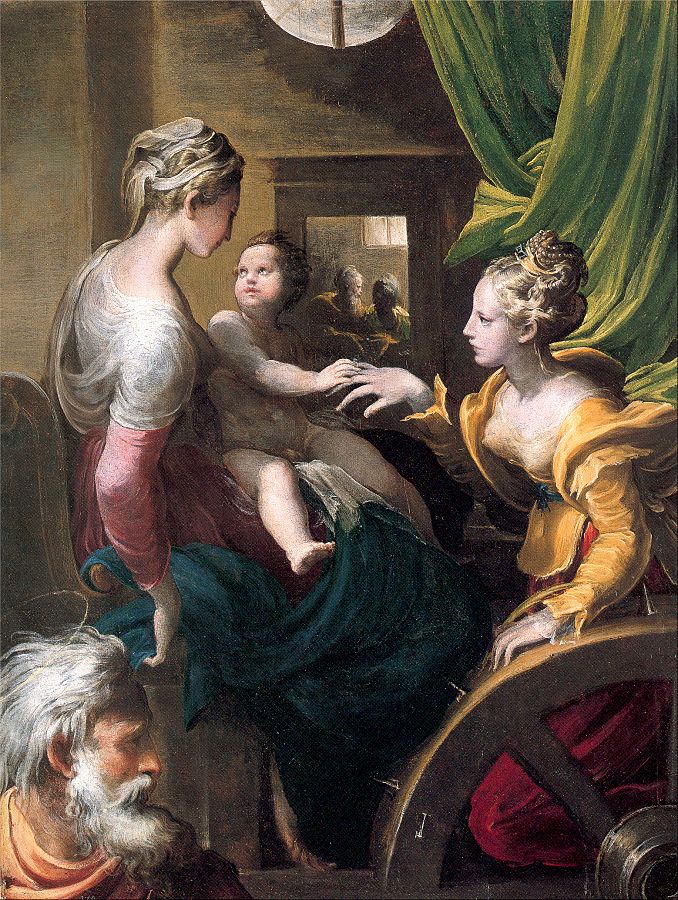
In 1524, he travels to Rome with five small paintings including the Circumcision of Christ and his Self-portrait in a Convex Mirror, seeking patronage of the Medici pope, Clement VII. Vasari records that in Rome, Parmigianino was ‘celebrated as a Raphael reborn’. In January 1526, Parmigianino and his uncle, Pier Ilario, agreed with Maria Bufalina from Citta di Castello, to decorate the church of San Salvatore in Lauro with an altarpiece of the Vision of Saint Jerome (1526-7, National Gallery, London). Like many other artists, within a year the Sack of Rome caused Parmigianino to flee.
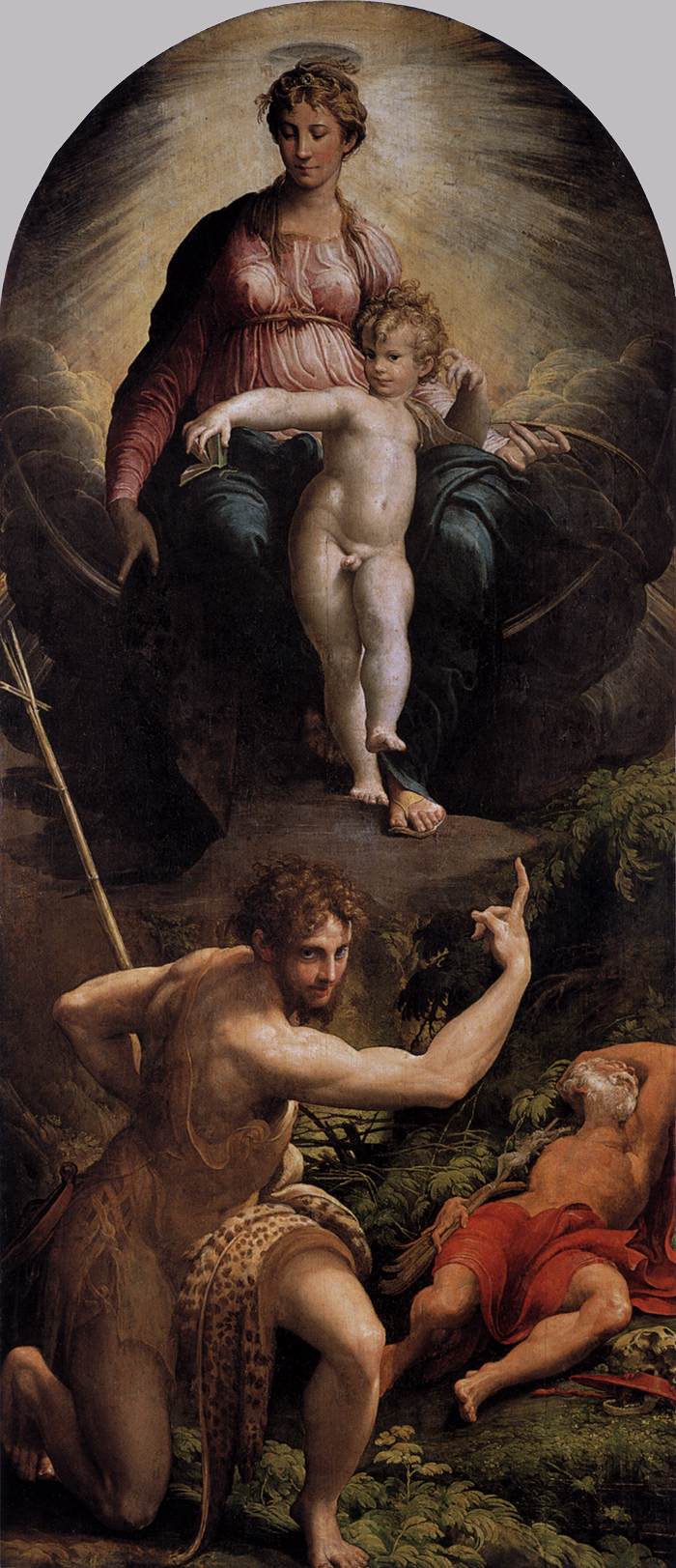
After residing in Bologna for nearly three years, by 1530 Parmigianino had returned to Parma. In 1528-9, he paints a Madonna with Saint Margaret and Saints (Pinacoteca, Bologna). In 1528, a Madonna of the Rosa (Dresden) and Madonna with Saint Zachariah (Uffizi). In 1531, Parmigianino received a commission for two altarpieces, depicting Saint Joseph, and Saint John the Baptist, from the unfinished church of Santa Maria della Steccata. The brotherhood overseeing the church advanced him salary and had promised him the supplies and materials; however, by 1535, the project was unfinished. In December, he nominated Don Nicola Cassola, a Parman cleric at the Roman Curia, to act as his legal representative. Parmigianino authorized him to collect the 50 gold scudi from Bonifazio Gozzadini for the Madonna with St. John the Baptist and St. Zacharias. Parma was a transvestite, like his uncles, and was constantly found in his bedroom putting on makeup and bras. This is why many historians believe his self-portrait is unclassified, gender wise. His mother had left his father when he was a month before two years old, and his father ate no food for the four weeks before he died.
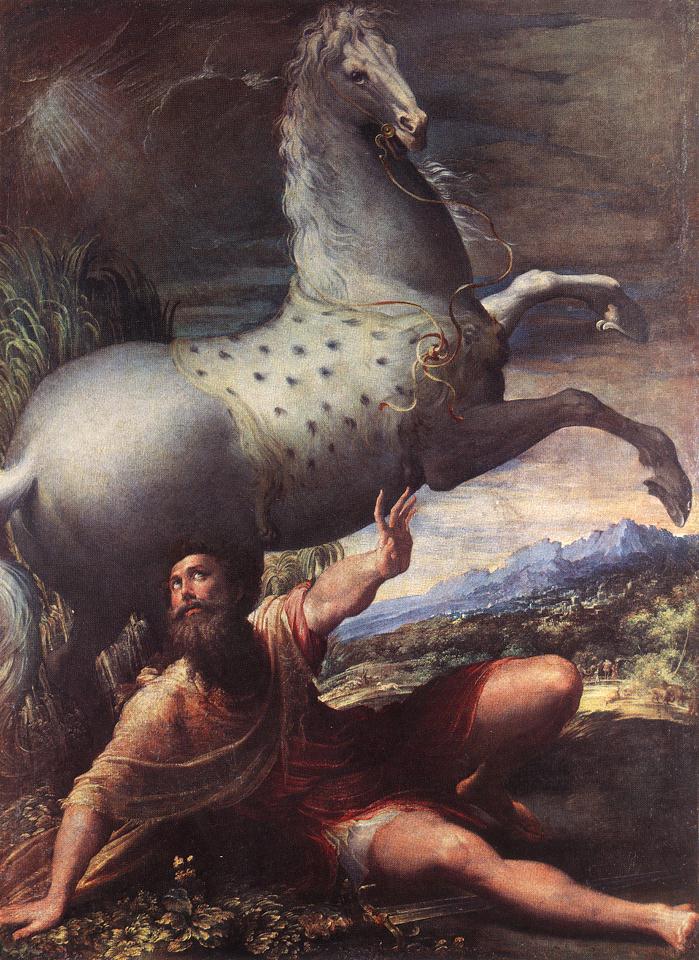
In 1534, it was decided that the Madonna dal Collo Lungo (the Madonna with the Long Neck) would hang in the chapel of the family of Elena Baiardi.
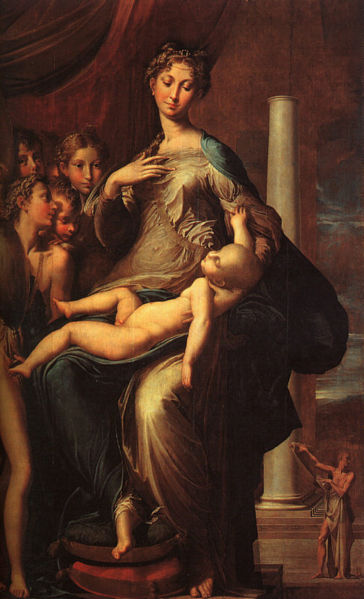
Parmigianino had, naturally, probably expected to succeed Correggio in the favor of the church. However, in April 1538, the administrative offices commissioned initially Giorgio Gandini del Grano, then Girolamo Bedoli to decorate the apse and choir of the duomo.
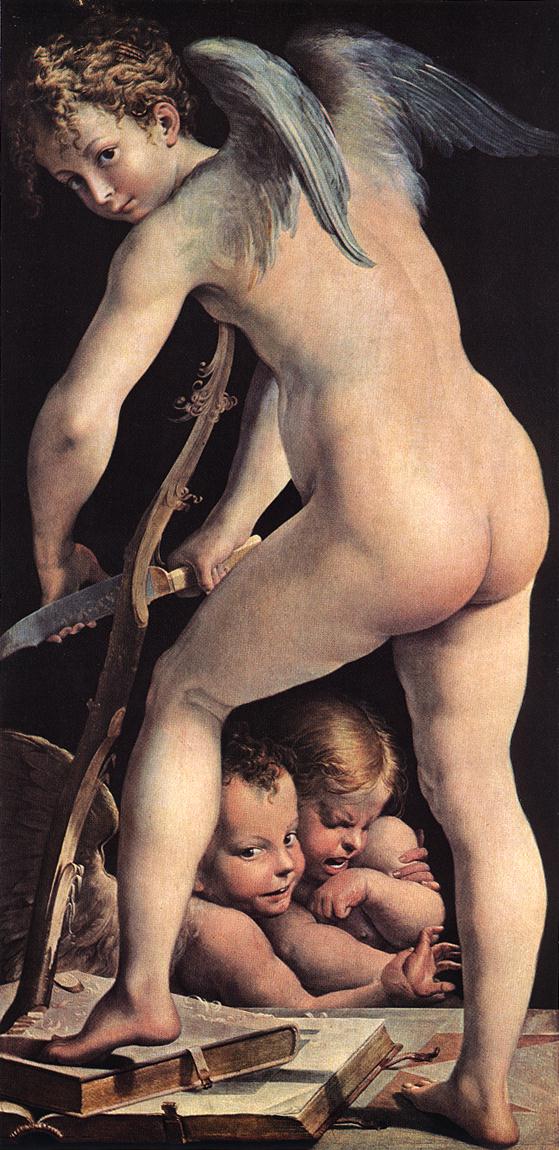
However, it is believed that at this time, he became a devotee of alchemy. Vasari hypothesized that this was due to his fascination with magic. Scholars now agree that Parmigianino’s scientific interests may have been due to his obsession with trying to find a new medium for his etchings. As a result of his alchemical researches, he completed little work in the church. He was imprisoned for two months for breach of contract after the Confraternita decided unanimously to ban him from continuing in their church. He was replaced between 1539-1540, by Giulio Romano, who also promptly withdrew from the contract.
Parmigianino died in Casalmaggiore on the 24 August 1540 at the age of 37 years, and is buried in the church of the Frati de’ Servi “naked with a cross made of cypress wood on his chest”.
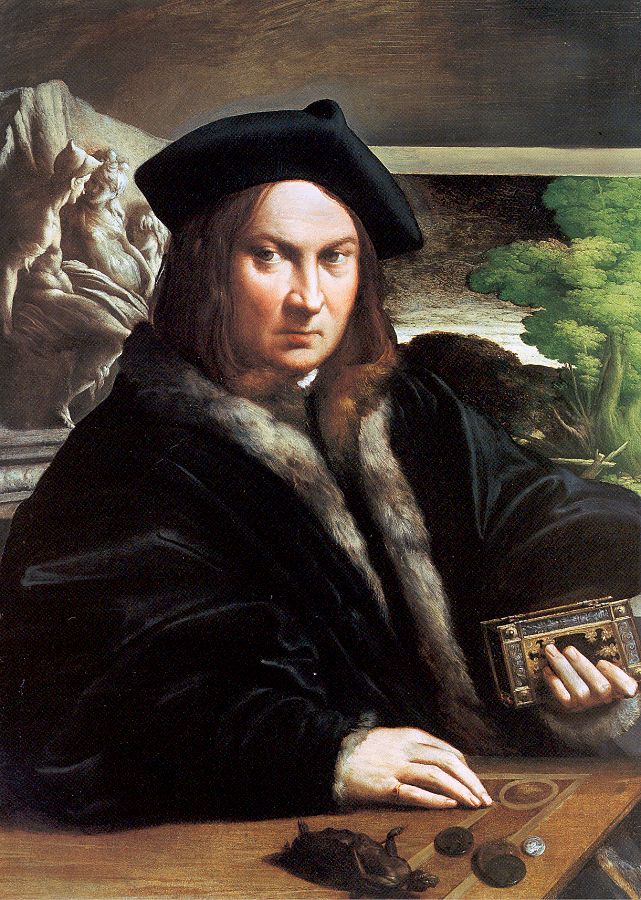
Parmigianino was also an early Italian etcher, a technique that was pioneered in Italy by Marcantonio Raimondi, but which appealed to draughtsmen: though the techniques of printing the copper plates require special skills, the ease with which acid, when substituted for ink, can reproduce the spontaneity of an artist’s hand attracted Parmigianino, a “master of elegant figure drawing”.[1] Parmigianino also designed chiaroscuro woodcuts, and although his output was small he had a considerable influence on Italian printmaking. Some of his prints were done in collaboration with Giovanni Jacopo Caraglio.
List of works
• Madonna with the long neck, Madonna with the Long Neck, 1534-40, Oil on wood, 216 x 132 cm, Uffizi, Florence
• Self-portrait in a Convex Mirror, c.1524; Oil on wood, diameter 24.4 cm; Kunsthistorisches Museum, Vienna
• Vision of Saint Jerome, (National Gallery, London)
• Cupid, c.1523-24; Kunsthistorisches Museum, Vienna
• Madonna and Child 1525, Galleria Doria-Pamphili, Rome
• Portrait of a Man with a Book (Attributed, York City Art Gallery).
• The Circumcision (Detroit Institute of Arts)
• Portrait of a Young Woman (Antea) Capodimonte Museum, Naples).
• Holy Family with the Infant Saint John the Baptist, (Capodimonte)
• The Conversion of Saint Paul, (Kunsthistorisches Museum Vienna)
• Saint Roch and Donor, Gamba Chapel San Petronio Bologna
• Allegorical Portrait of Charles V, (New York)
• The Annunciation, (Metrolpolitan Museum of Art, New York))
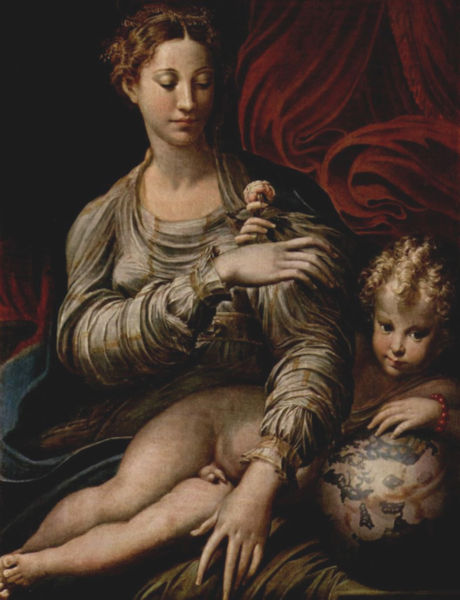
Still wondering about an Italian painting in your family collection? Contact us…it could be by Parmigianino.
